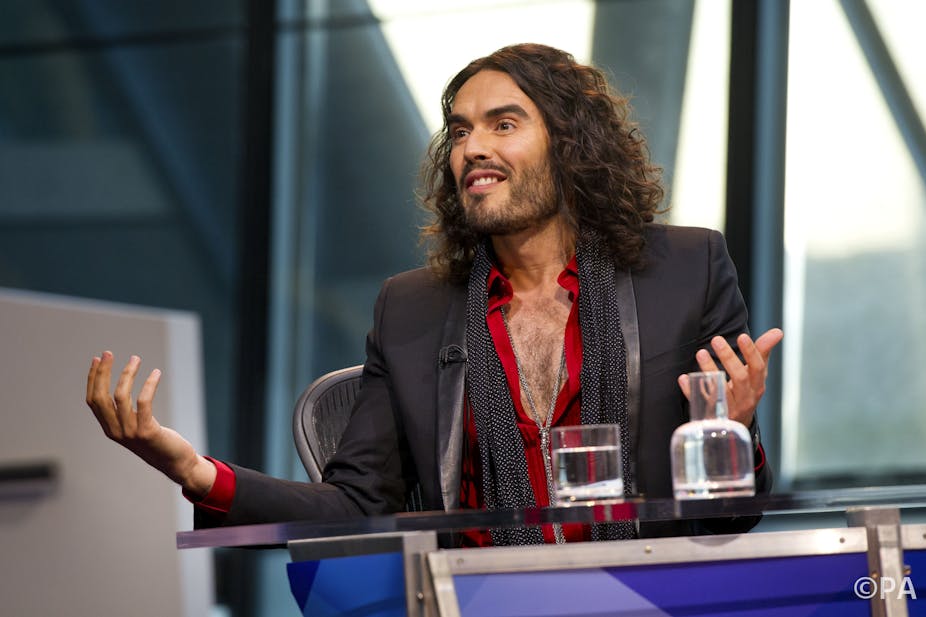You would be forgiven for thinking that Russell Brand, that radical left-winger and advocate of revolution, and Iain Duncan Smith, Conservative secretary of state for work and pensions, didn’t have anything in common. But they do: their hatred for heroin substitute methadone.
Brand and IDS come from opposite ends of the political spectrum. But in Brand’s BBC3 documentary End the Drugs War and IDS’s recent “personal” article in the Sunday Telegraph calling for the methadone industry to be in the sights of those fighting drug addiction show, they find common cause.
They are not alone. Right-wing think tanks have published numerous reports calling for methadone to be replaced as the frontline treatment for heroin addiction by abstinence-based residential rehabilitation, or as they put, “state-sponsored addiction” that “merely replaces one addiction with another”.
This narrative enabled the Tory front bench to establish clear blue water between its policy and that of the Labour government which had invested heavily in increasing access to methadone. Meanwhile among the commentariat, antipathy towards methadone and advocacy of abstinence is regularly echoed by luminaries such as Will Self.
The methadone method
Methadone is a synthetic opiate which reduces heroin addicts cravings for their drug of choice. It is advocated as the most effective treatment for heroin addiction by The World Health Organisation, the UK Medical Royal Colleges, the Department of Health, NICE, the Advisory Council on the Misuse of Drugs, and Public Health England.
Used well, methadone introduces stability into chaotic lives. Compared to addicts outside treatment, methadone patients are less likely to die, less likely to inject, less likely to contract blood-borne viruses; they use fewer drugs and commit fewer crimes to obtain them.
Once you’re in charge
On the other hand, methadone is itself addictive, so even if individuals lives improve their addiction continues. It is implicated in hundreds of deaths each year, many patients continue to use heroin on top of it and there is concern that it entrenches dependency, delaying natural recovery.
In 2010 the drug treatment world anticipated a major clash between the incoming government’s advocacy of abstinence and the medical establishment’s commitment to methadone. It never happened.
Opposition and government are different. In opposition, strong moral statements such as being against “state-sponsored addiction” is useful differentiation. Once in government, personally accountable for reducing crime or preventing the spread of HIV, the contribution methadone makes to achieving these goals looks less like a moral outrage and more like a pragmatic policy option, much as it did to your predecessors.
This gave space to officials to mediate a rapprochement between clinicians and politicians articulated in the 2010 drug strategy paper. This steers a middle course between “recovery”, the new overarching ambition of policy, as an aspiration for each individual and methadone as one route to achieving it.
Methadone remains the frontline treatment – and 146,000 of the 160,000 heroin users in treatment are still prescribed it – but clinicians now acknowledge that the stability this offers needs to be exploited as a platform for recovery rather than an end in itself.
Narrative over numbers

Neither IDS nor Brand buy this. The former has tried and failed at least four times to replace the new consensus with an abstinence-based approach and Brand continues to rubbish methadone and advocate for abstinence at every opportunity.
Brand believes the primacy of his personal experience gives him a unique insight, transcending all the statistical analysis of the WHO and the randomised control trials of NICE: “I know … I’ve been there”.
This chimes with a popular culture which values narrative over numbers and celebrity over expertise. Rehab and abstinence worked for Brand, so that must be the right way for everyone. Implicit in this is the assumption that drug addiction is the unique disruptor of otherwise stable lives. The cumulative effects of multiple disadvantage that characterise the lives of most addicts are discounted as they don’t match the life experience of the elites who shape our collective view of the world through their control of media, popular culture and politics.
IDS believes in the moral certainty of his mission. Addiction is identified in the Breakdown Britain report he chaired as one of the “five pathways to poverty”. In this narrative, poverty is caused by moral laxity, poor parenting and lack of self discipline. This is entrenched by the state redistributing wealth from morally responsible, hard-working families, to maintain the feckless in welfare dependency.
Methadone therefore not only “merely replaces one addiction with another” it also traps people in poverty and commits the taxpayer to support them and subsequent generations of feckless poor in perpetuity. Furthermore, as he darkly suggests in his Sunday Telegraph article, the “methadone industry” has a financial interest in maintaining addicts in addiction as this provides employment for health workers and profit for drug companies.
Brand and IDS may struggle to recognise they have much in common. But what unites them isn’t so much the one thing they agree about as the power their shared membership of the elite gives them to impose their distorted vision on the rest of us.

